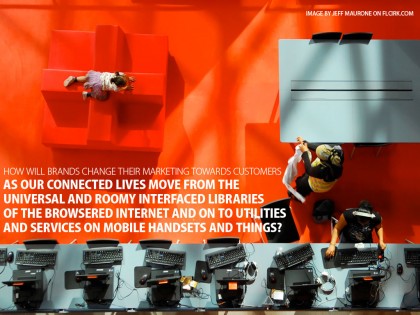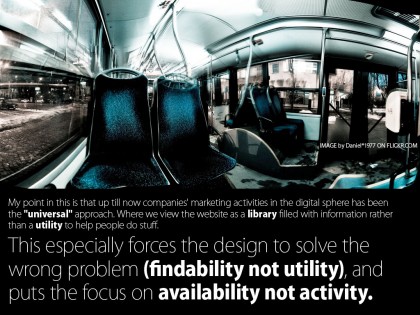How will brands change their marketing towards customers as our connected lives move from the universal and roomy interfaced libraries of the browsered internet and on to utilities and services on mobile handsets and things?

As Microsoft’s Europe Logs On report states, this scenario might demand our attention sooner than we thought:
- “Internet use on PCs will drop from 95% today to only 50% over the next 5 years as other web enabled devices such as IPTV, games consoles and mobile phones become more popular”.
As we all know by now, mobile is not a smaller version of the PC/browser Internet, it’s a completely different platform with it’s own abilities and context for use
. As customers increasingly will be more available on these smaller devices and less accessible through the PC’s browser we need to keep up with the development if we want to stay in touch.
But when the arenas where we meet our customers change, we also have to change the way we talk and interact on these devices – to best fit with its abilities
. Let’s not make the same mistakes as generations before us, and unimaginatively copy “standards” from existing mediums.
My point in this is that up till now companies’ marketing activities in the digital sphere has been the “universal” approach
. Where we view the website as a library filled with information rather than a utility to help people do stuff
Lifestyle factors such as relationship issues or substance(much more How long does cialis take to work?.
. This especially forces the design to solve the wrong problem (findability not utility), and puts the focus on availability not activity.
To me the new smaller interfaces and the contexts where they will be used challenges us to think more in micro activities
. Identify core services, core activities and core consumers. Finding smaller unique solutions for different situations and different contexts. And moving much of our digital initiatives into micro actions and micro marketing compared to how we do stuff today.


